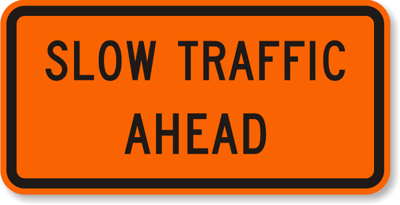(Editor’s Note: Welcome to our new monthly transportation column by Jason Henderson, an urban geography professor at San Francisco State University and the author of Street Fight: The Politics of Mobility in San Francisco (UMass Press, 2013). Onward!)
San Francisco is in a mobility stalemate that is becoming increasingly inequitable.
In this supposedly “transit-first” city, the political establishment can’t bring itself to just say “no” to vocal minorities of over-entitled motorists. In the process, it is breaking decades-old promises to improve Muni, enhance bicycling, and make the city more walkable — creating dysfunction on the streets of San Francisco.
This dynamic is on vivid display in several planning initiatives now underway, including the SFMTA’s Transit Effectiveness Project (for which public comments on the EIR are due Sept. 17) and the overly complicated efforts to establish Bus Rapid Transit on Van Ness Avenue and Geary Boulevard and cycletracks on Polk Street.
In each case, officials are dancing around the sensitivities of a handful of motorists and merchants — even to the point of ignoring actual data showing that San Franciscans just aren’t as dependent on the automobile as some believe. For example, studies show 85 percent of people arrive to the Polk Street corridor without a car.
Not only does this disconnect leave San Franciscans stuck in traffic, it is making our city less equitable for car-free households (which make up 30 percent of the city), as well as bicyclists and transit passengers who own cars but use them sparingly.
On Van Ness Avenue, buses crawl along at 5.2 miles per hour, on average. Mixing with cars slows buses, causes bunching and irregular reliability for the 16,000 passengers boarding along this two-mile corridor, and the 38,000 who ride the 47 & 49 routes daily.
Half of the households on Van Ness between Market and Lombard are car-free, yet they have poor transit service and are saturated with other people’s car traffic and pollution.
Franklin and Gough are car sewers and Van Ness is not much better, as the city historically prioritized moving cars over all else. Now the city plans to modernize the corridor by creating bus-only lanes in the middle of Van Ness, providing extensive pedestrian improvements and landscaping, and large, visible bus stops that dignify the transit experience.
Buses will be faster and more efficient, carrying 36 percent more people than each mixed traffic lane and cutting operating costs by 30 percent. Giving a lane to buses will also smooth traffic flow for cars and trucks, because buses would no longer be shifting in and out of mixed traffic in the third outside lane, a classic win-win solution.
But for the plan to work, it also comes with a tradeoff of limiting left turns from Van Ness (except at Broadway) and removing 105 parking spaces, causing a small minority of car activists to howl.
Yet these are the sorts of tradeoffs it takes to become a functional city. Will San Francisco prioritize the wishes of a few dozen drivers over tens of thousands of transit riders? That’s the choice, along this and other key corridors.
On the 5-Fulton, it now takes 50 minutes to go from the Transbay Terminal to Ocean Beach, about the same time it takes to get from San Francisco to Pittsburgh/Bay Point on BART. During rush hour, the buses are often jam-packed, so the 20,000 daily passengers on that line receive less than dignified service.
Muni proposes to fix the 5-Fulton with a practical, modest approach to re-allocate street space. By reworking bus stops and removing some curbside parking, the 5-Fulton pilot proposal will improve reliability and make the bus 10 minutes faster, and add 20 to 30 percent more capacity to the route during rush hour.
Improving the 5-Fulton would relieve traffic on the parallel Fell and Oak corridor. Like Van Ness BRT, this is the transit we were promised when the Central Freeway was removed and the city approved massive amounts of new housing in its place.
The 5-Fulton pilot is critical for the 60 percent of households in the Western Addition that are car-free, and the project would remove just 30 parking spaces. Assume that each of those parking spaces turns over four times per day (a generous assumption considering that cars sit for days in some parking spaces), that’s 120 car owners. Compare that to the 20,000 bus passengers on the 5-Fulton, and we start to see the glaring inequities in the effort to preserve street parking.
At two recent public meetings on improving the 5-Fulton, motorists predictably protested the lost parking. Like the “Save Polk” debacle that sank cycletracks on that street, some of the opponents of the 5-Fulton plan tried to block the Fell-Oak bicycle improvements last year and are currently trying to sink safety improvements on Masonic.
The city will likely bend over backward to placate these motorists. Already it has considered introducing angled parking, as was done at the Panhandle on Baker, to ensure no motorist is inconvenienced. But that makes no sense given the goals that the city has set for itself of 30 percent of all trips by transit and 20 percent of all trips by bicycle in the next decade.
The city should consider the tens of thousands of car-free households and hundreds of thousands of transit passengers before caving in to the automobile extremists.
If the city caves to a minority of parking enthusiasts, as it did on Polk Street, there really is no hope for improving Muni for the majority. Ask any parent, rewarding whiners only leads to more whining — and in this case, more gridlock.

